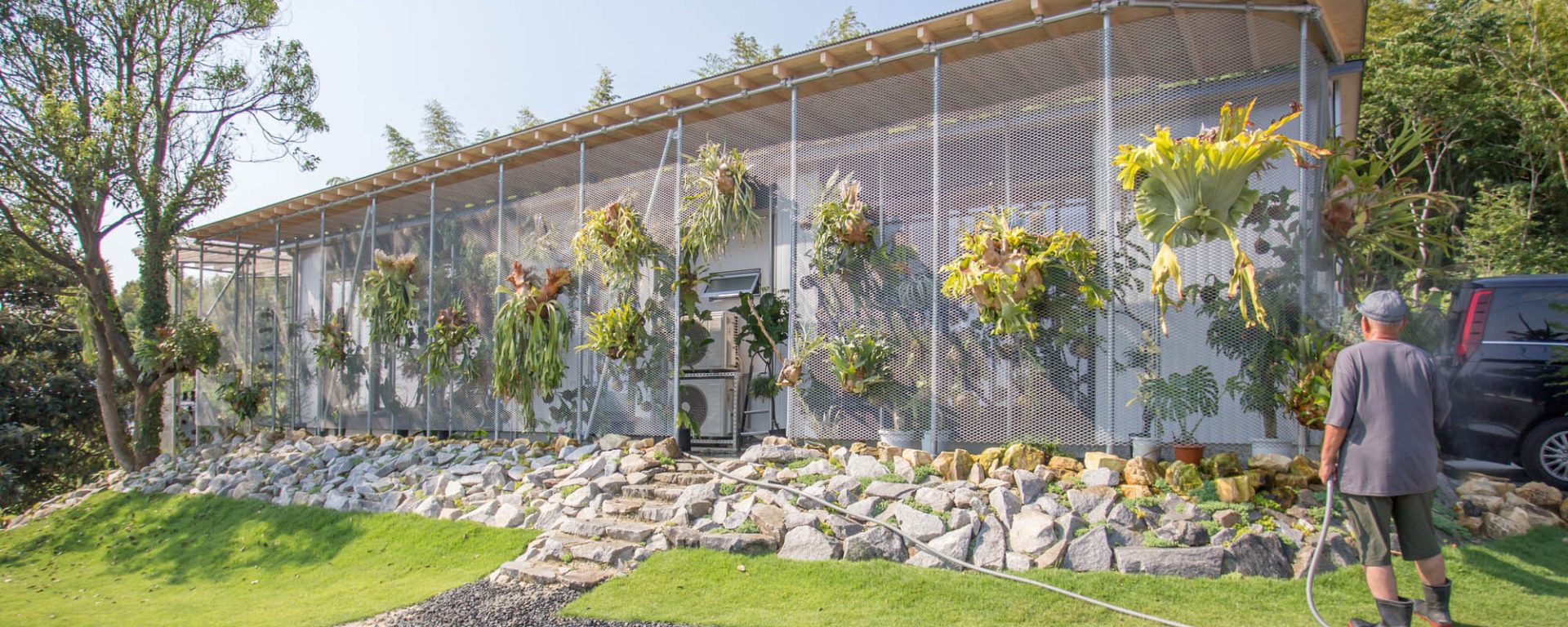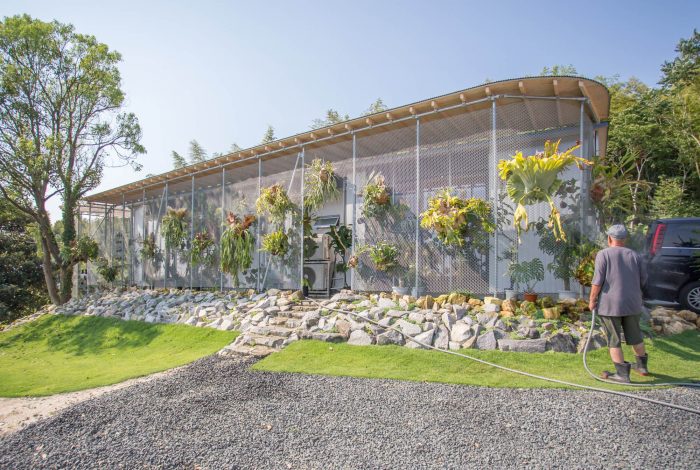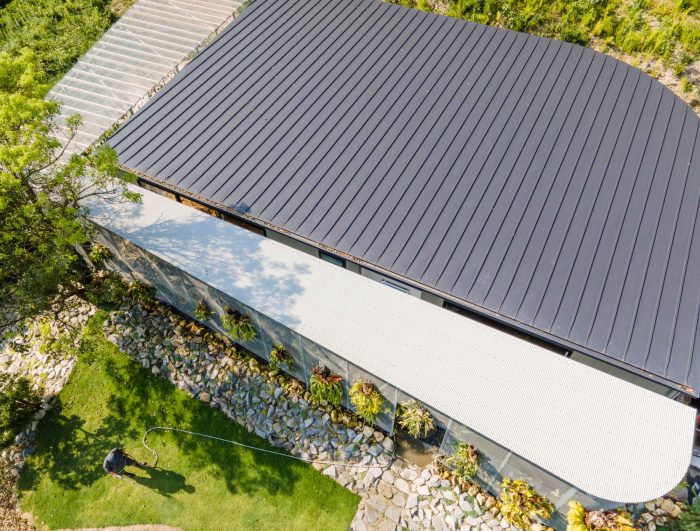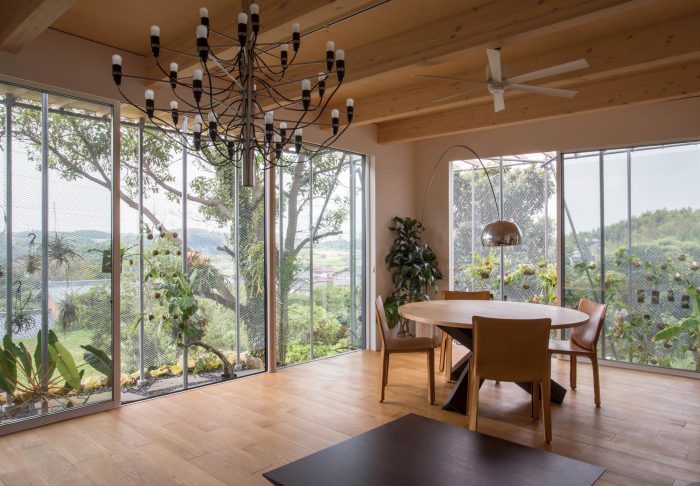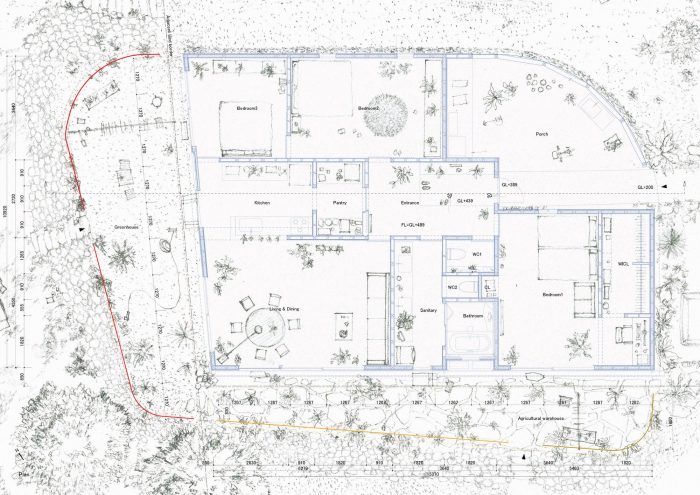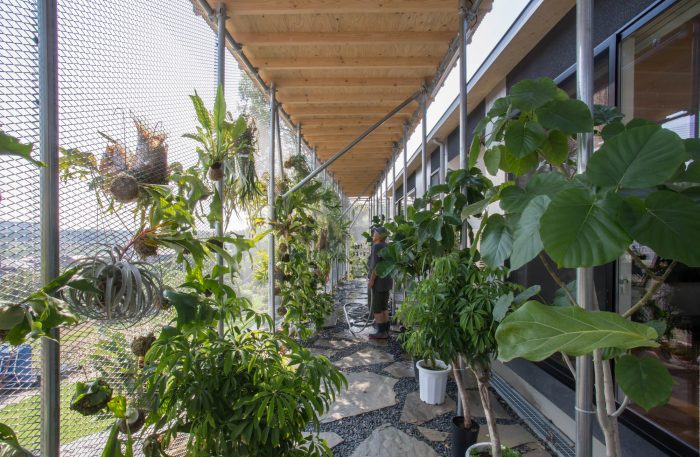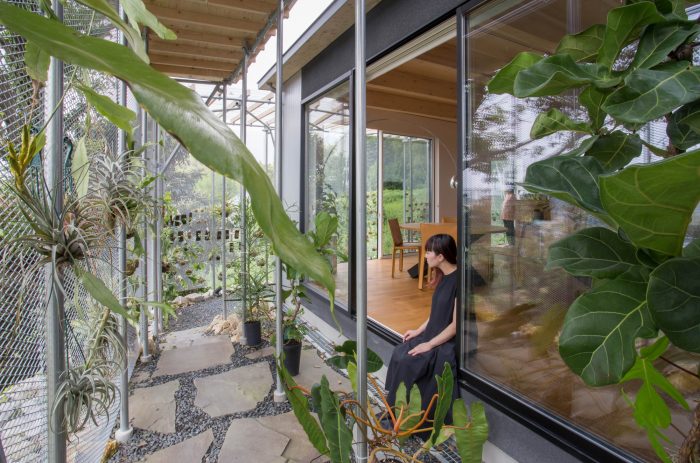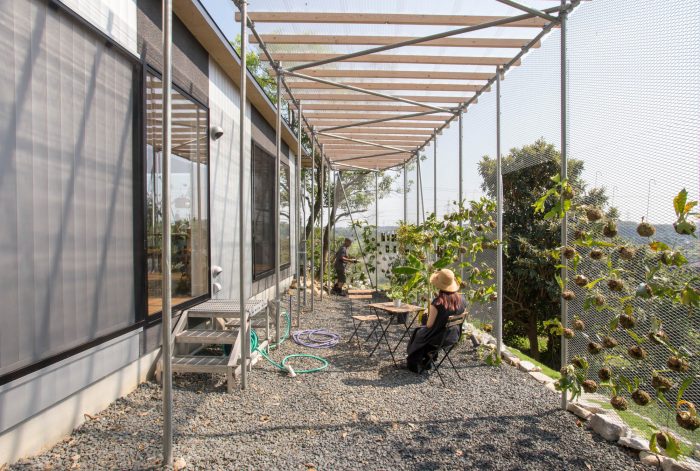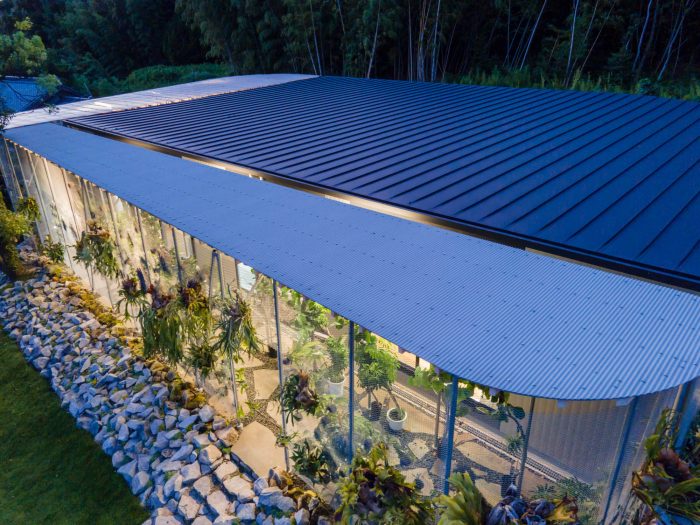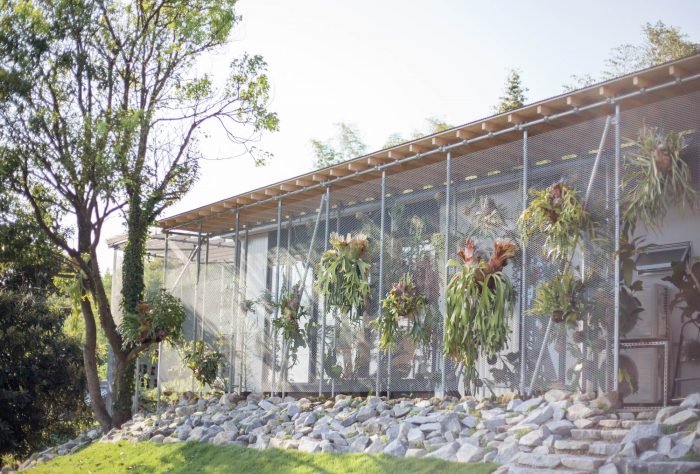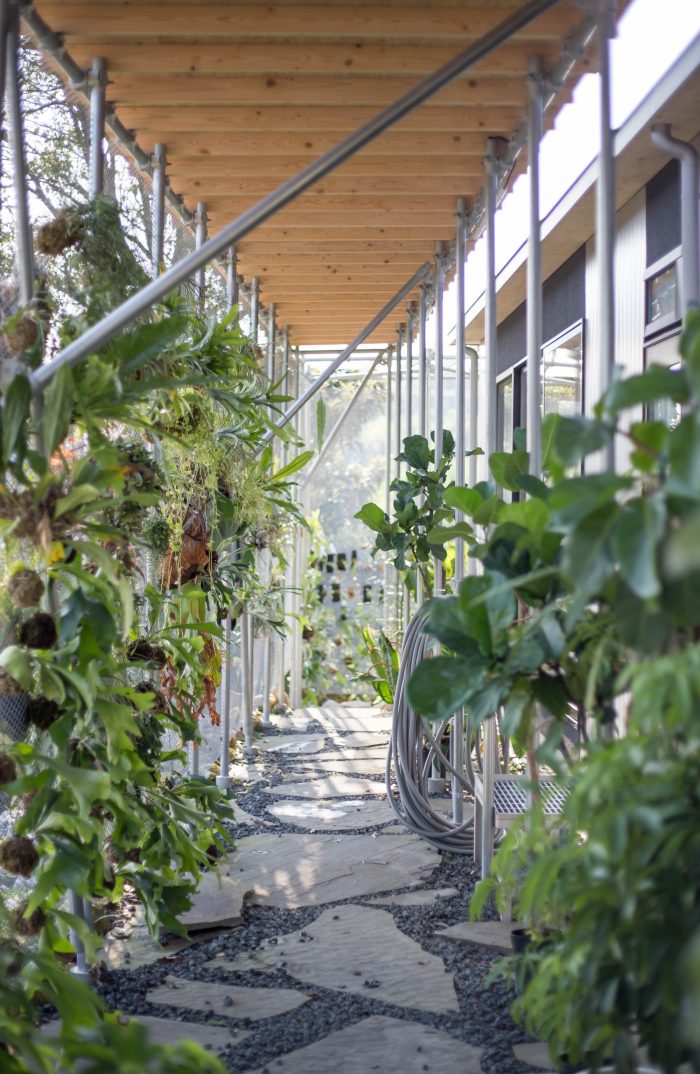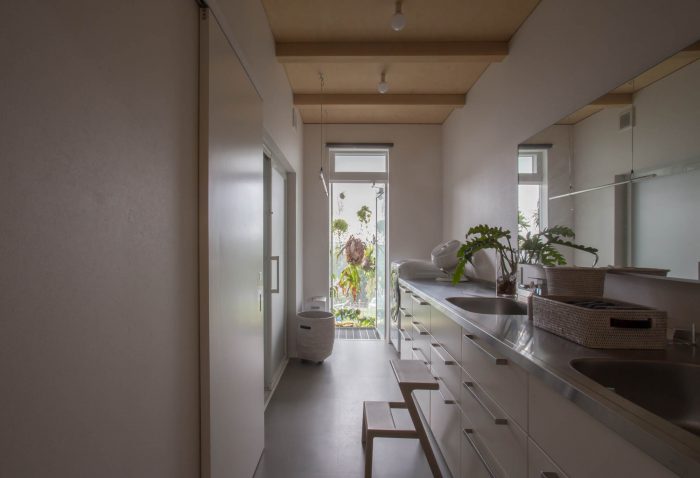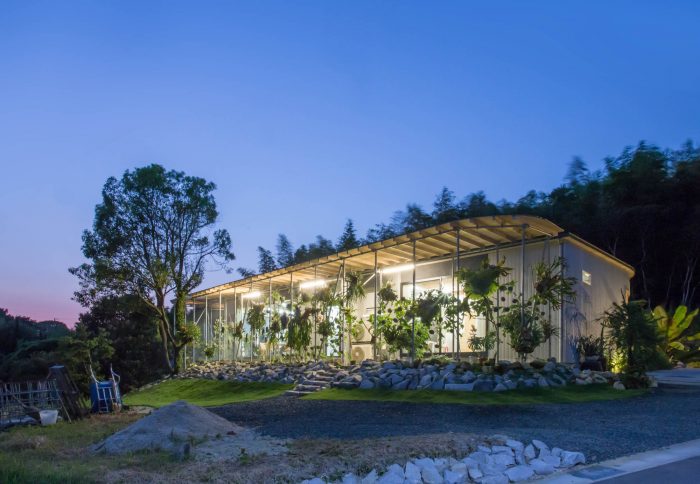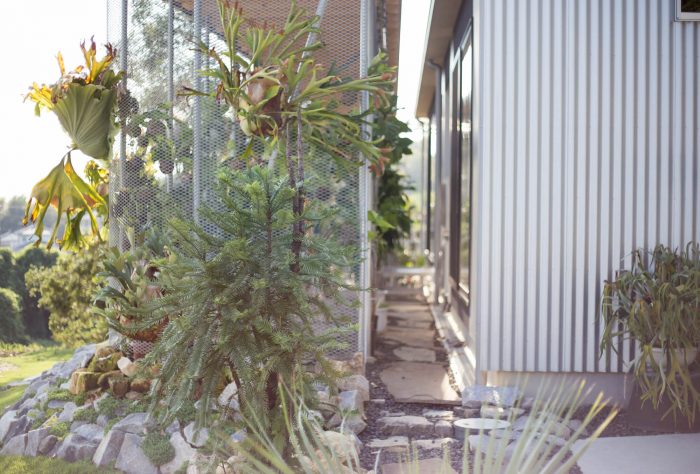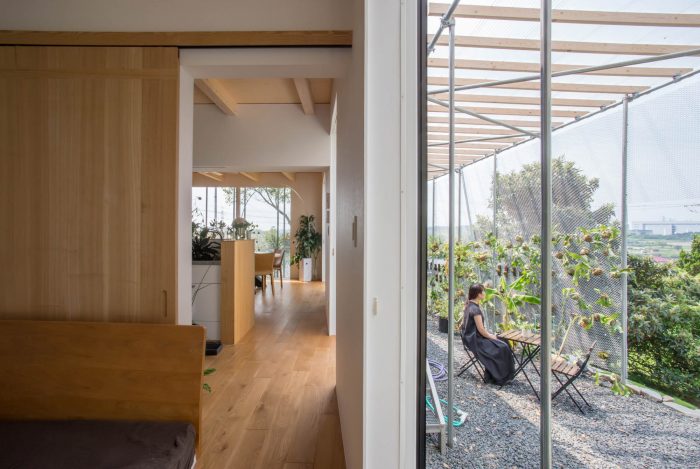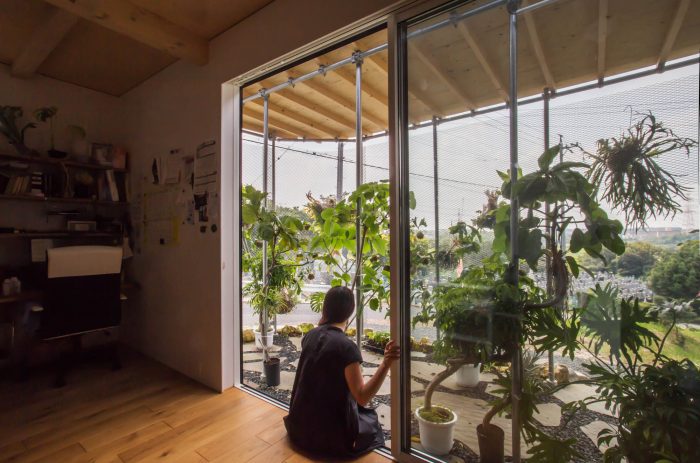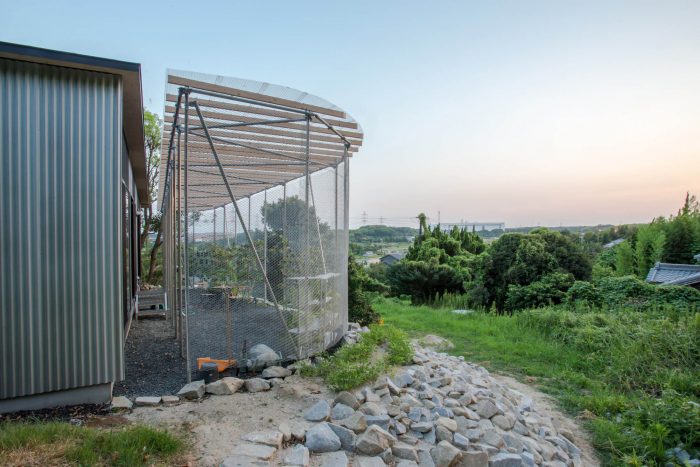这是一个为全家人经营热带植物农场的主人设计的两户型房子的计划。在日本的乡下,合法的农田和住宅用地是相邻的,而且是混合的。本项目的业主也购买了一块由三种土地组成的土地。”住宅用地”、”农田(有路)”和 “农田(无路)”。
It is a plan for a two-family house for the owner who runs a tropical plant farm with the whole family. In the countryside of Japan, legal farmland and residential land are adjacent to each other and are mixed. The owner of this project also purchased a site consisting of three types of land: “residential land”, ” farmland (with a road)” and ” farmland (without a road)”.
乍一看,这些土地似乎是一个整体,但相邻土地之间却有法律规定的一条无形的强边界线。通过关注相邻土地的边界线,我们提出了农村农田和住宅用地的新景观。
At first glance, these lands seem to be one, but there is a strong invisible borderline between neighboring lands as stipulated by law. By focusing on the borderline of the neighboring land, we propose a new landscape of rural farmland and residential land.
因此,我们在相邻土地的边界线附近,分别建造了符合三地法律规定的建筑(房屋、农业仓库、温室)。通过这种布局方案,在跳过用地边界的同时,完成了一栋栋建筑的外部造型。这样一来,相邻土地的边界线就消失了,业主可以像在一块大地上建房子一样生活。
Therefore, we built separate buildings (houses, agricultural warehouses, greenhouses) that comply with the laws of each of the three lands, just near the border of the adjacent land. With this layout plan, the outer shape of one building is completed while jumping over the boundary of the site. As a result, the borderline of the neighboring land disappears, and the owner can live like a house built on one big land.
另一方面,为了表现每栋建筑的土地不同,我们在三栋建筑之间设计了一个很窄的缝隙。在缝隙中,由于光线的条纹、雨滴、风的逃逸等环境的影响,画出了相邻土地的新边界线。 在这个规划中,我们设计了生命的连接和新的景观和现象,超越了土地的限制。
On the other hand, to show that the land of each building is different, we designed a very narrow gap between the three buildings. In the gap, a new borderline of the adjacent land is drawn due to the environment such as light streaks, raindrops, and wind escape. In this plan, we designed life connections and new landscapes and phenomena that transcend the constraints of land.
建筑师:1-1 Architects
面积:166 m²
年份:2020年
首席建筑师:Yuki Kamiya, Shoichi Ishikawa
景观:Takumi Sugiyama
结构设计:Komatsu Structural Design
施工单位:Hirata Building Company Limited
国家:日本
Architects: 1-1 Architects
Area: 166 m²
Year: 2020
Lead Architects:Yuki Kamiya, Shoichi Ishikawa
Landscape:Takumi Sugiyama
Structural Design:Komatsu Structural Design
Construction:Hirata Building Company Limited
Country:Japan

